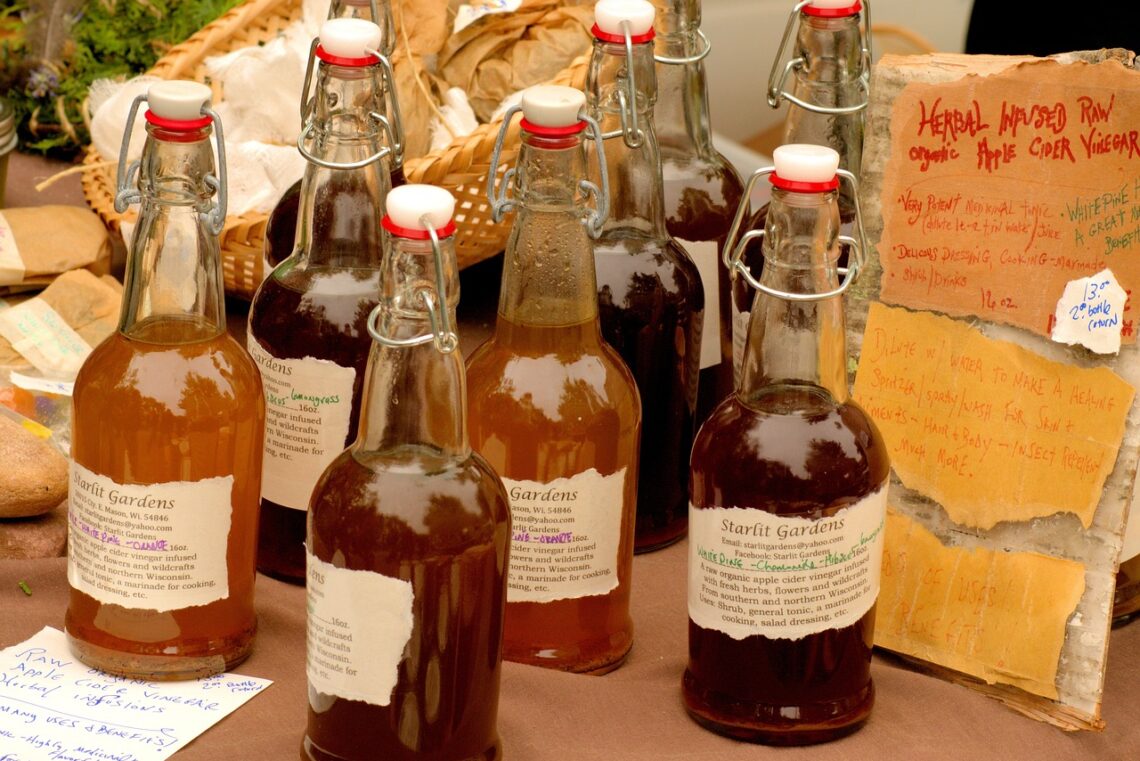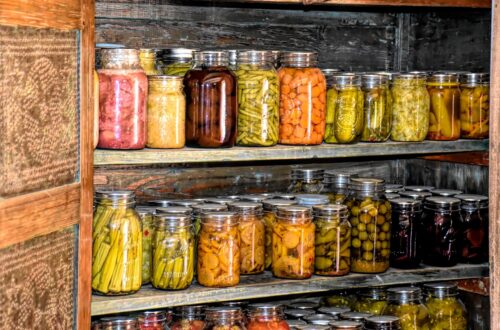Make the best fire cider around with this traditional fire cider recipe!
Fire cider is a popular home remedy this time of the year, but it’s also a tasty addition to salad dressings, hot and cold beverages and much more. While you can certainly buy fire cider, making your own cider blend is so much more fun and you can use the freshest ingredients!
In this guide, I’ll teach you how to make a sweet, sour and deliciously spicy fire cider at home using simple ingredients and a Mason jar. If you love heat and complex flavors, this recipe is hard to beat!
Affiliate disclosure: As an Amazon Associate, I may earn commissions from qualifying purchases.
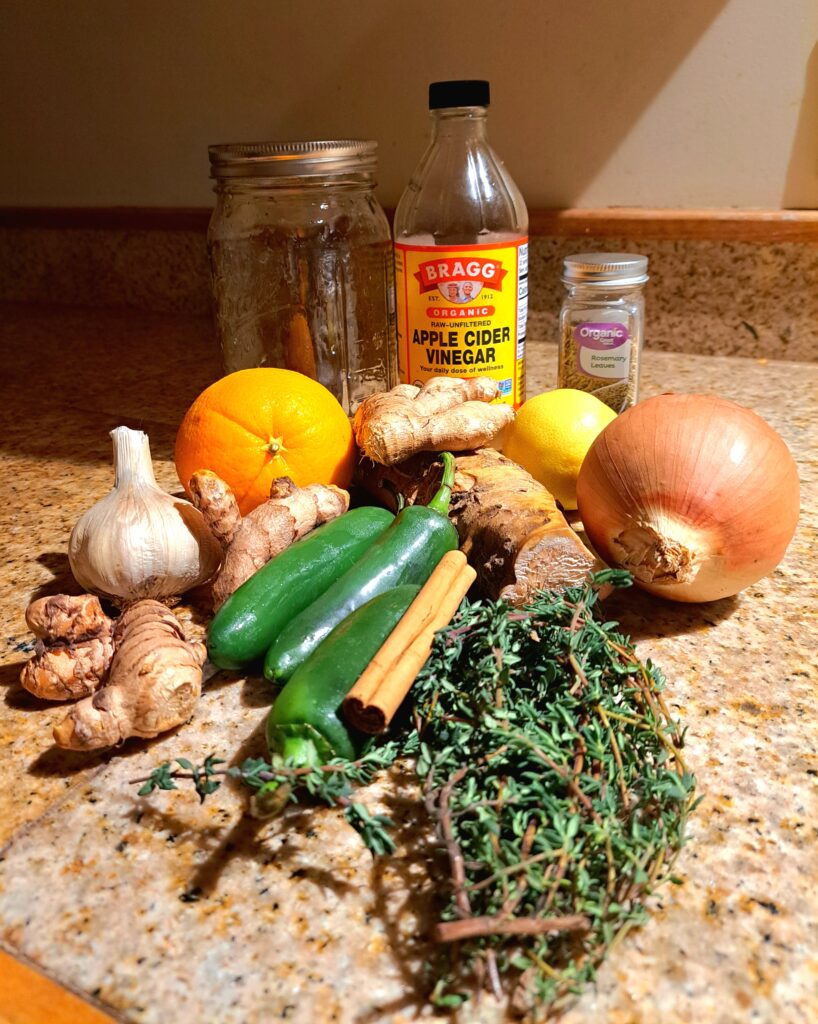
How to Make Fire Cider from Scratch
Fire cider was popularized by Rosemary Gladstar, but making fire cider has become an annual tradition for many homesteaders today. Different recipes use different ingredients, but most fire cider recipes call for zingy horseradish and a few jalapenos or bird’s eye chilis. This recipe is a traditional take on fire cider, but you can always experiment with other flavors, like galangal, lemongrass or kaffir lime leaves.
Ingredients in Fire Cider:
- Organic apple cider vinegar
- ½ cup of fresh horseradish root, finely chopped or grated
- ½ cup of fresh ginger root, finely chopped or grated
- 1/8 cup of fresh turmeric root, finely chopped or grated
- ½ cup of onion, finely chopped
- 2 to 3 jalapenos, finely chopped
- 8 to 10 cloves of fresh garlic, finely chopped or crushed
- 1 lemon, sliced
- ½ orange, sliced
- 1 cinnamon stick
- 2 sprigs of fresh rosemary or 1 tablespoon of dried rosemary leaves
- 3 sprigs of fresh thyme or 1 tablespoon of dried thyme leaves
- 1 teaspoon of whole peppercorns
- Raw honey to taste, about ¼ cup
- Knife
- Cutting board
- Grater
- 1 quart-sized Mason jar
- 1 Ziploc baggy or plastic Mason jar lid
- Glass fermentation weights (optional)
- Fine mesh strainer or cheesecloth
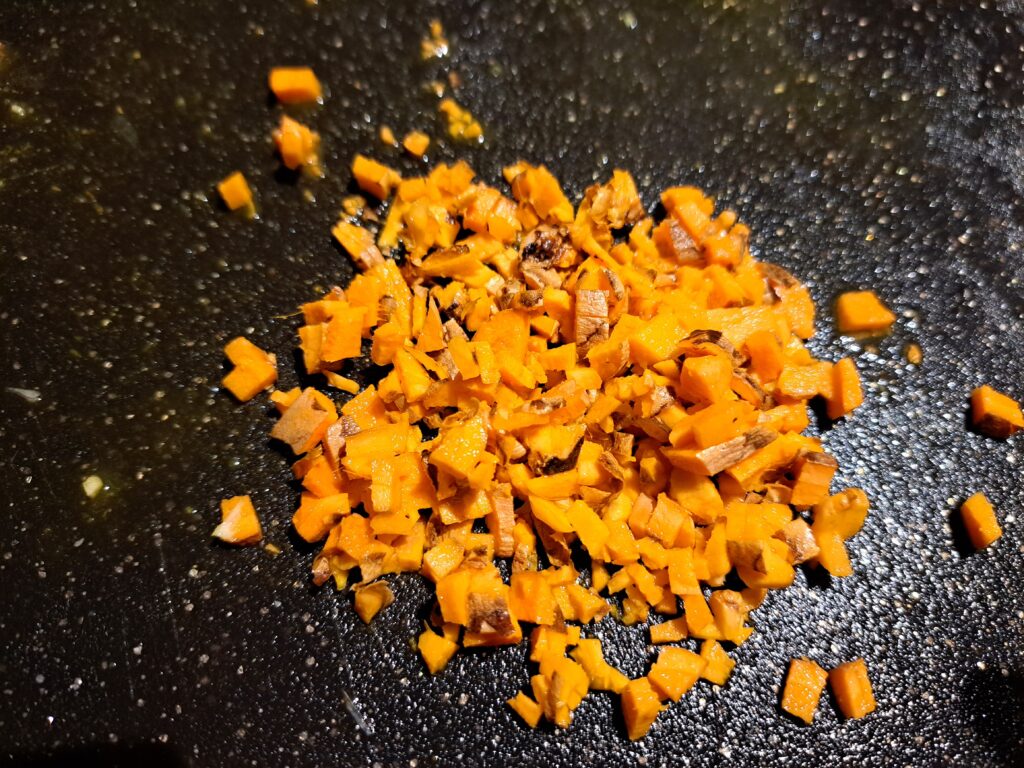
Making Fire Cider:
Step 1: Prepare the fire cider ingredients.
If you haven’t already, prepare the ingredients for fire cider. That means slicing up your lemon and orange and chopping or grating the turmeric, ginger, jalapenos, onion, garlic and horseradish root. You can peel the root veggies if you want to – I peeled the horseradish root, but didn’t peel the turmeric or ginger.
Tip: Keep in mind that horseradish and jalapenos are quite spicy and they may cause your eyes to water as you work. If you’re sensitive to spicy things, you may want to wear food grade nitrile gloves and turn on your stove vent. (One time I was working with so many jalapenos, I resorted to wearing swimming goggles!)
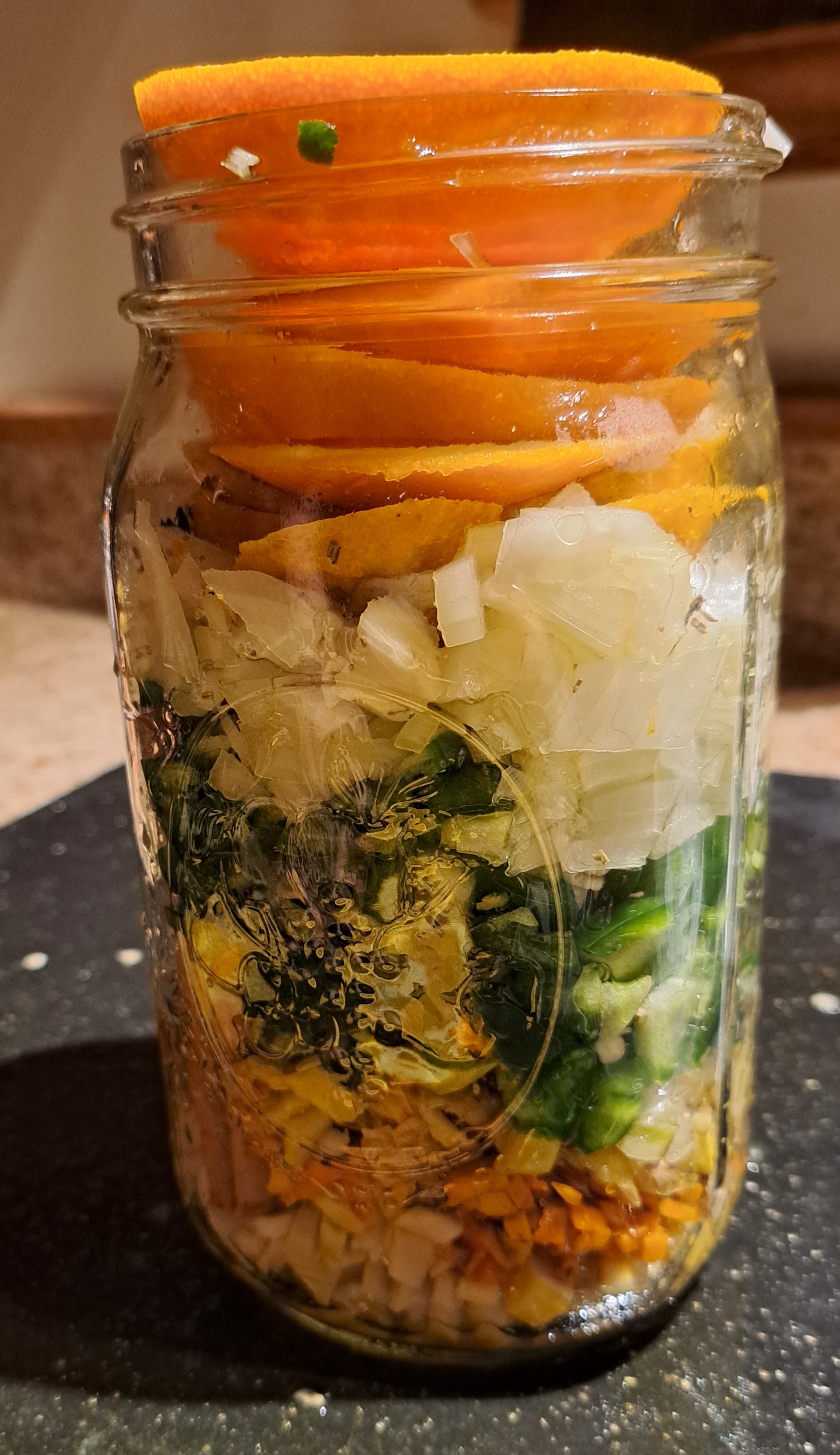
Step 2: Fill up the Mason jar.
Pack all of the solid ingredients into a clean Mason jar (add everything except the honey and apple cider vinegar). I started with the chopped ingredients first and then layered the citrus slices on top to hold the rest of the ingredients down.
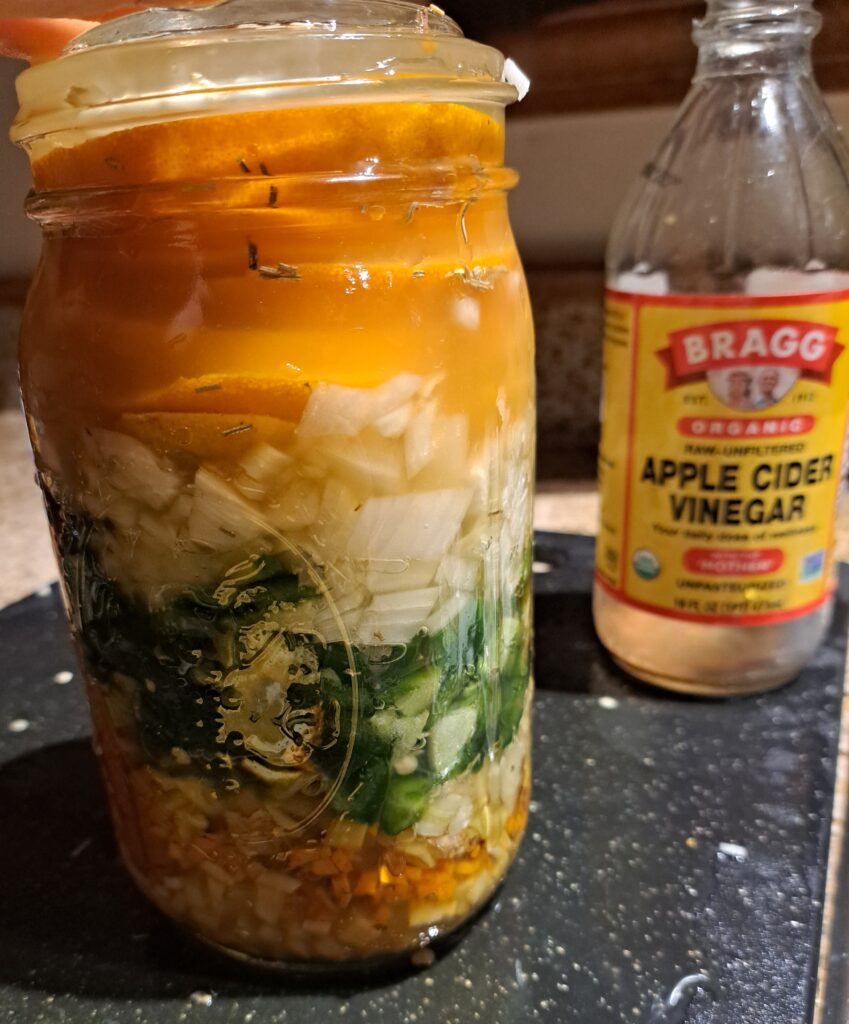
Step 3: Pour in the apple cider vinegar.
Next, pour the apple cider vinegar into the jar. Make sure to use enough vinegar so that all of the fresh ingredients are completely submerged. This is essential as the vinegar will keep the ingredients from spoiling!
Tip: If you have the space for it, you can add a fermentation weight on top of your fresh ingredients to weigh them down.
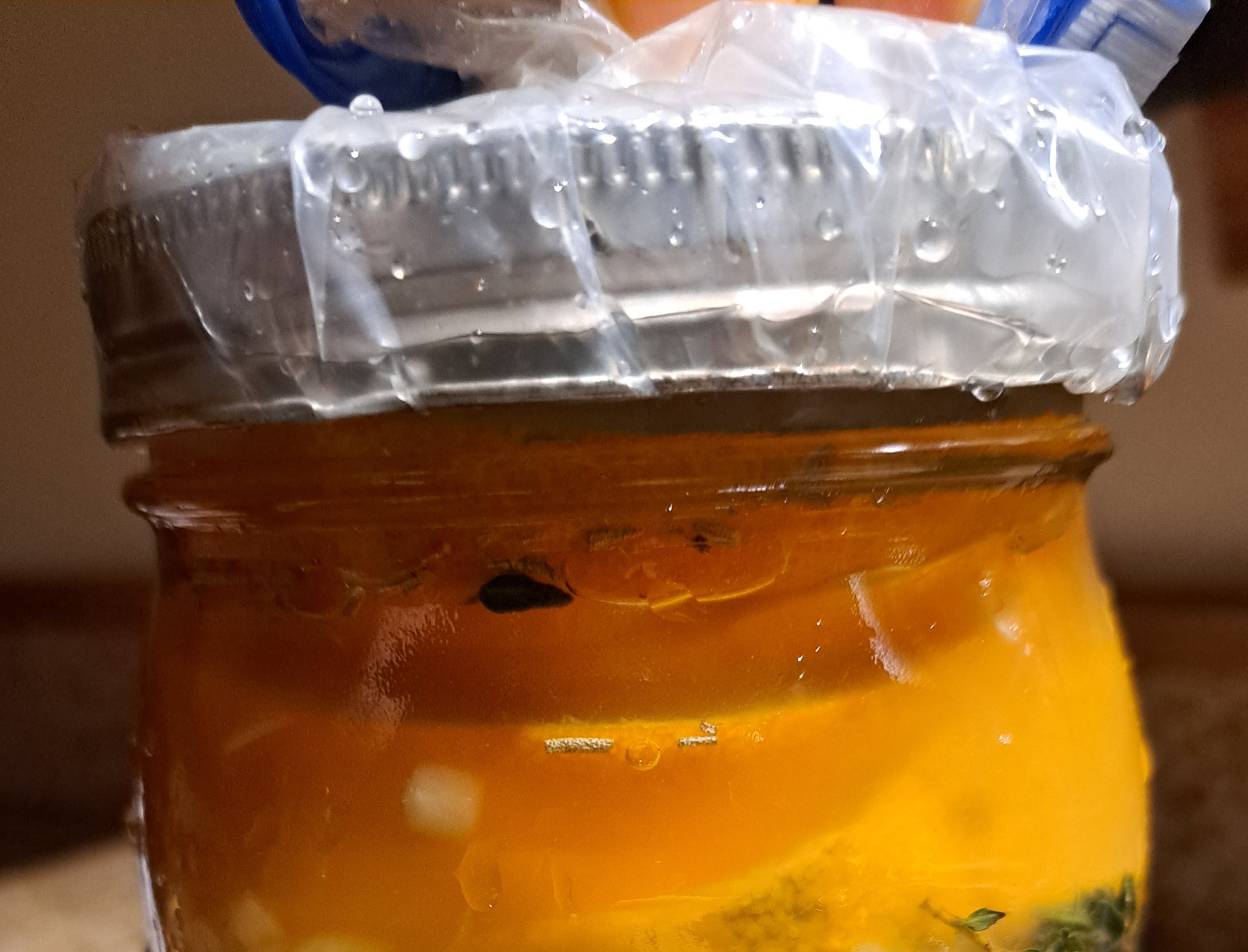
Step 4: Add a lid.
Once the ingredients (minus the honey) are all in your jar, screw the jar lid on. Using a plastic Mason jar lid is best as vinegar can react with metal. However, if you don’t have a plastic lid, you can place a plastic baggie over the top of your jar and screw a metal lid over the bag so that the vinegar doesn’t come in direct contact with the metal.
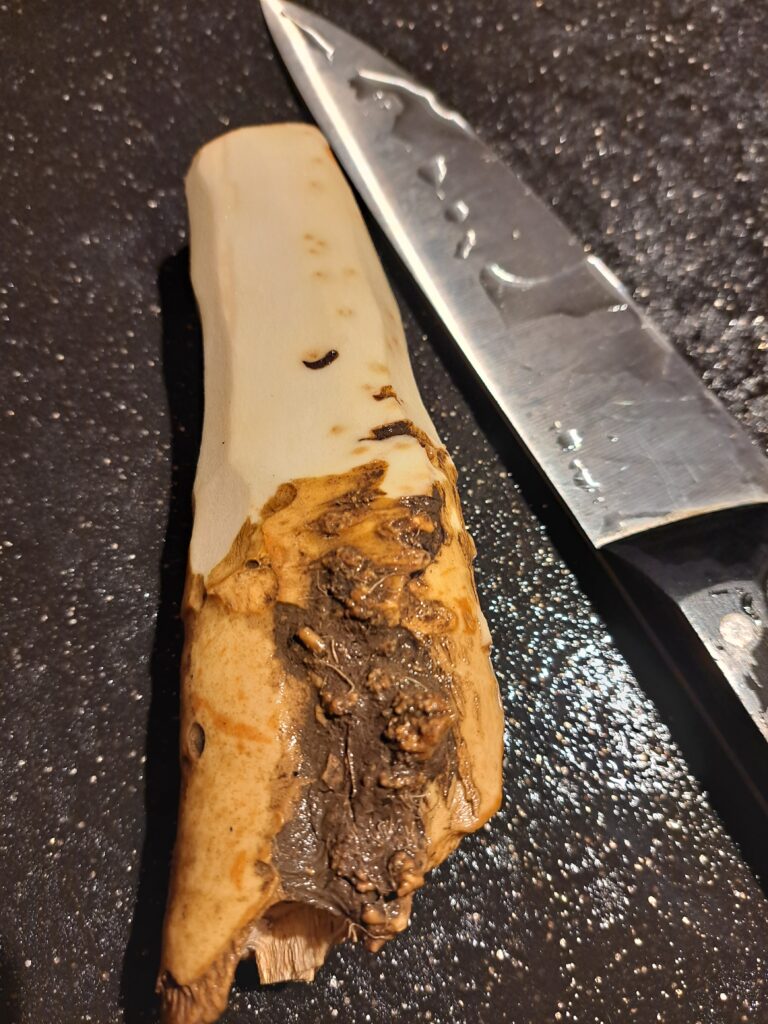
Step 5: Wait.
Place the jar in a cool, dark place and allow it to marinate for 3 to 4 weeks. Once a day, give the fire cider a good shake to stir the ingredients around and build those tasty fire cider flavors!
Tip: I placed my fire cider jar in a kitchen cabinet so I would remember to shake it daily.
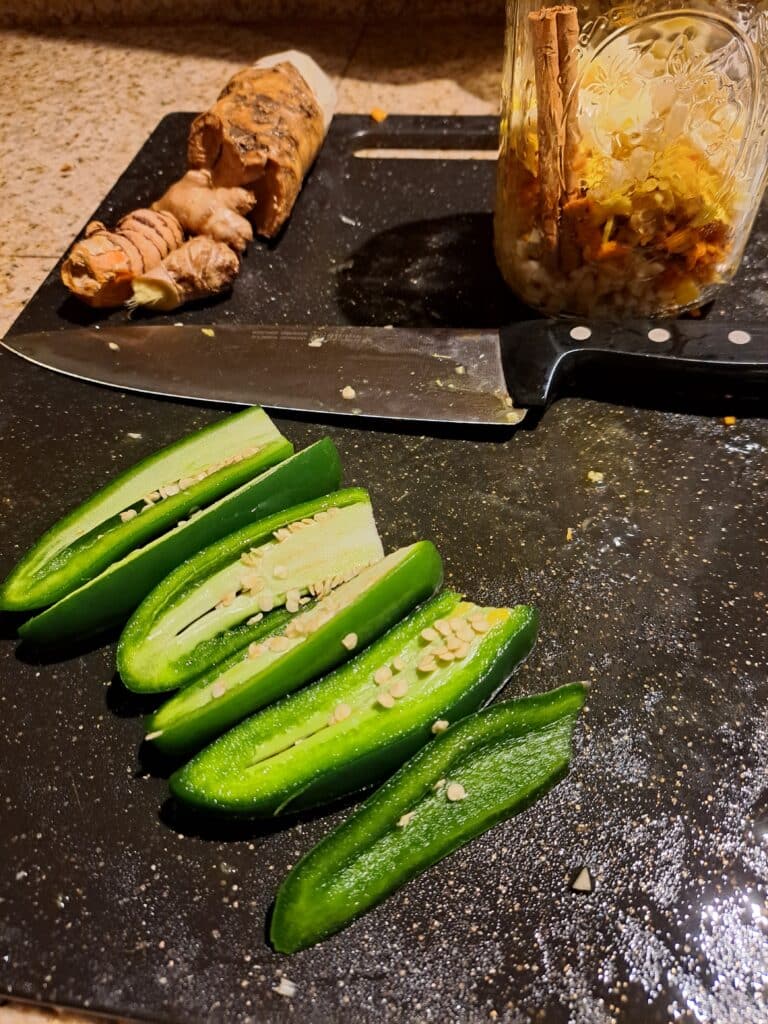
Step 6: Strain the fire cider apple cider vinegar concoction!
After steeping the fire cider for a few weeks, strain out the solid ingredients with a fine mesh strainer or some cheesecloth.
Conserve all of that delicious fire cider vinegar and add the solid ingredients to your compost pile.
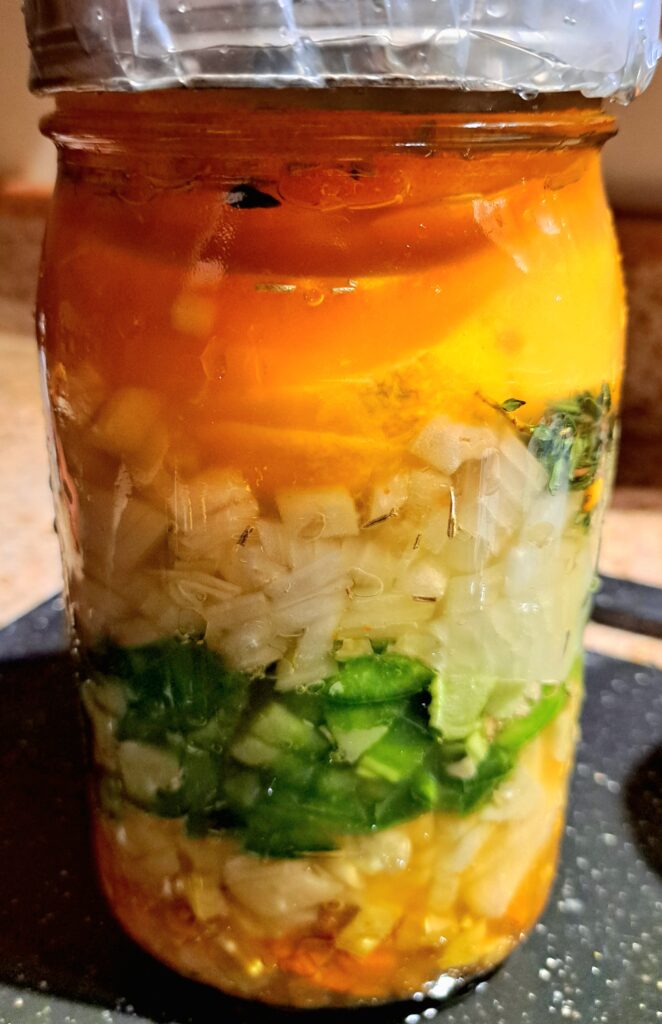
Step 7: Add honey and enjoy!
Stir in honey to taste. I used about ¼ cup of raw honey, but you may want to use more or less depending on how sweet you like your fire cider. Your finished fire cider should be tangy, sweet and a bit spicy… the perfect flavor combination!
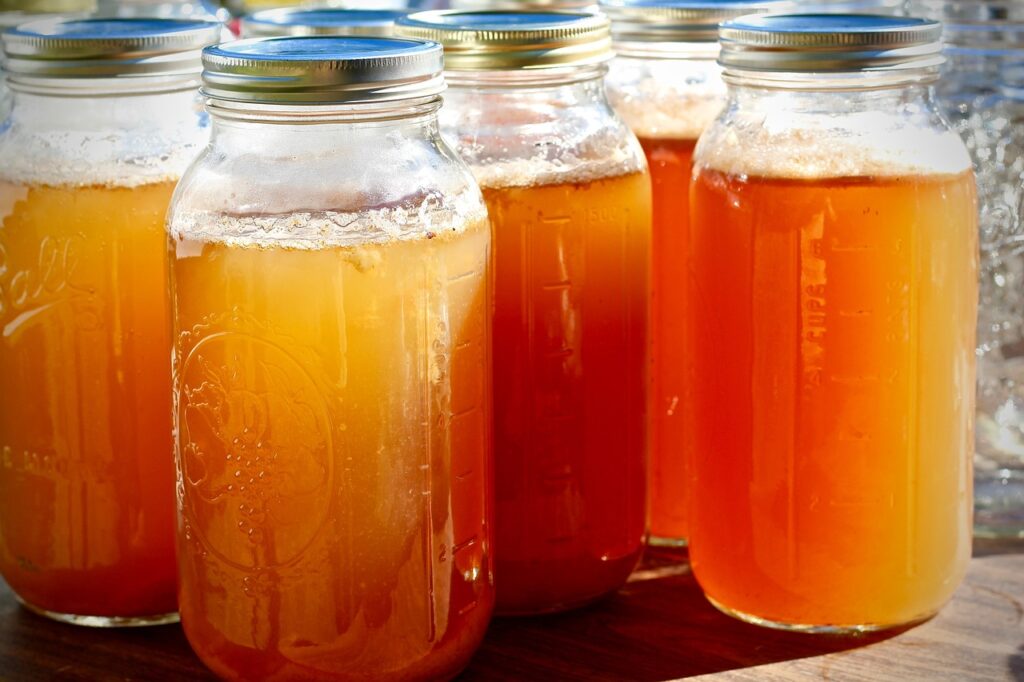
How to Store Fire Cider Vinegar
Some home preservers store finished fire cider right on their pantry shelves, but I recommend keeping it in your fridge. When properly stored, fire cider should stay fresh for about 6 months.
If you make fire cider in bulk or you don’t think you can use all of your fire cider quickly, you can also freeze fire cider in ice cube trays and pop out a cube as you need it!
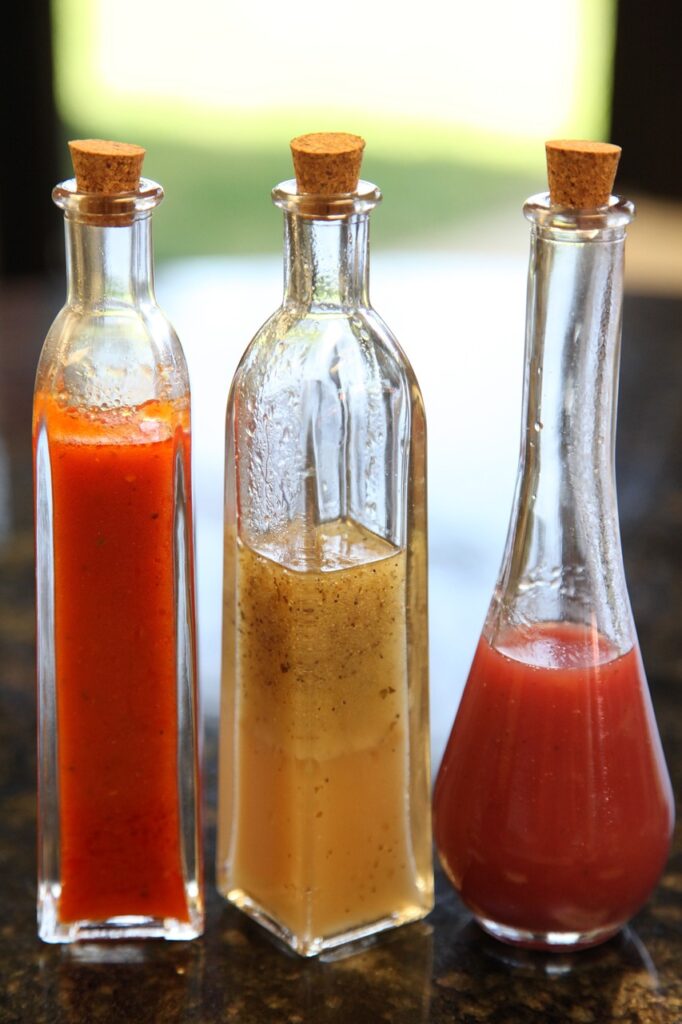
How to Use Organic Fire Cider
The most common way to enjoy fire cider is to sip a tablespoon or two in the morning, either in water or on its own. For even more oomph, try out fire cider in sparkling water!
You can also use your homemade cider to fire up:
- Salad dressings
- Marinades
- Cocktails
- Herbal teas
- Chutneys
- Salsa
- Sauces
For even more options, try mixing fire cider into recipes while cooking or stir it into soups and stews. Basically, you can use fire cider anywhere you’d normally use apple cider vinegar or in any recipe that could use a little extra heat!
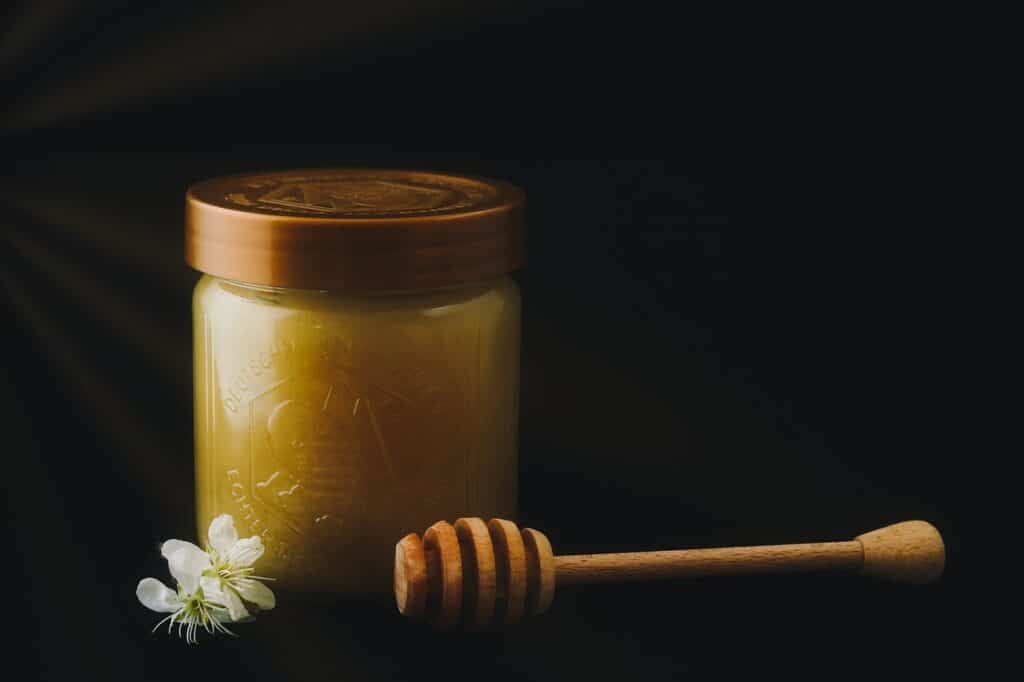
Frequently Asked Questions About Making and Using Fire Cider Tonic
Can you reuse fire cider pulp?
Fire cider pulp can be dehydrated with a food dehydrator and then ground and used as a spice. You can also add fire cider pulp into your compost bin, stir it into a bokashi composter or trench compost it straight into your garden.
What happens if you don’t burp fire cider?
Fermented recipes, like sauerkraut, should not be stored in airtight containers as fermentation produces gases which can cause tightly sealed jars to explode. Fire cider is not a true fermentation recipe (it’s more of an infusion), so you can seal your jar and you don’t need to burp the cider as it steeps.
Does fire cider have to have horseradish?
Fresh horseradish can be hard to find, so you may need to swap it out for jarred horseradish. If you go this route, make sure you read the ingredient label to ensure the horseradish jar doesn’t contain any extra ingredients beyond horseradish, water, and perhaps a bit of vinegar or salt.
